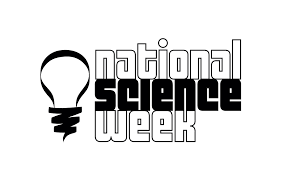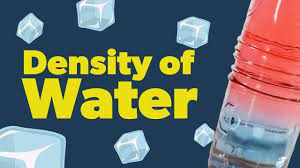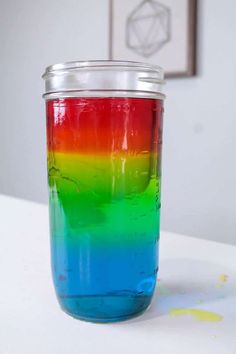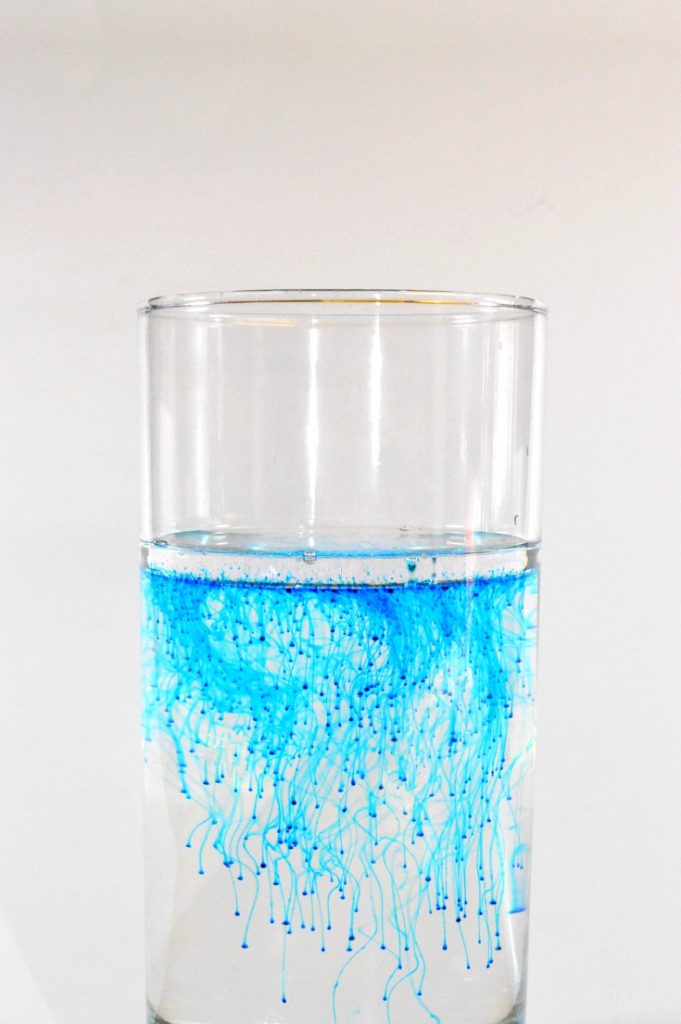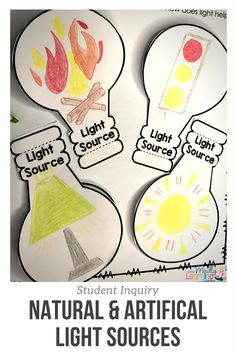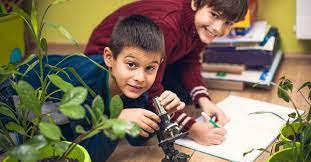This year’s National Science Week is set to captivate young minds with a host of activities designed to inspire and educate children across the country. 2023’s theme focuses on exploring the wonders of science through hands-on experiences, bringing concepts alive through interactive events and workshops.
Science Fairs will be bustling all week long in numerous locations, where budding young scientists can present their experiments and projects. These fairs not only allow kids to showcase their work but also give them a chance to explore their peers’ projects, fostering an environment of learning and inspiration.
Workshops offer a chance to dive deeper into specific fields. These range from Robotics, where children can build and program their own robots, to Astronomy sessions that gaze into the cosmos. For those enamored by the micro-world, Microbiology workshops will provide them with the chance to learn about what thrives beneath the lens of a microscope.
Virtual Reality experiences will transport kids to different worlds – from walking among dinosaurs to shrunk-down travels into the human body, offering an immersive way to learn about paleontology and human anatomy.
Outdoor activities such as Nature Walks encourage kids to be citizen scientists, observing flora and fauna while learning about local ecosystems, sustainability, and conservation efforts. Environmental science becomes more than just a subject as they engage with their surroundings.
For the inventors and builders, Maker Spaces will be open for youngsters to create gadgets and devices from scratch. Supporting creativity and problem-solving skills, these zones are perfect for sparking an interest in engineering.
Coding camps will demystify the language of computers, showing that games and apps are not just for playing – they’re built with code. By creating their own digital stories or games, children will learn logical thinking and basic programming concepts.
Live interactive science shows are set to offer explosions of fun with chemical reactions on stage. Safe yet exciting experiments performed by professional scientists will teach children about physics, chemistry, and more in a memorable way.
No matter which activity they engage in during National Science Week, kids are sure to come away with newfound knowledge and excitement for the field of science. The week aims not only to educate but also to spark curiosity that carries beyond classroom walls – igniting a passion for discovery that could inspire the next generation of innovators and explorers.
Science Experiments for Kids Water Density Temperature
Water density is a fascinating subject for science experiments, especially when introducing concepts such as buoyancy, temperature effects, and the properties of matter to young learners. Here’s an enlightening and fun article about science experiments for kids that explore water density and temperature.
Exploring Water Density and Temperature: Fun Science Experiments for Kids
Experiment 1: Temperature and Density Discovery
Objective: To show how temperature can affect the density of water.
Materials:
– Three clear glasses or jars
– Food coloring (three different colors)
– Warm, room temperature, and cold water
– A spoon
Instructions:
1. Fill one glass with cold water and add a few drops of blue food coloring.
2. Fill the second glass with room temperature water and add a few drops of green food coloring.
3. Fill the third glass with warm water and add a few drops of red food coloring.
4. Carefully pour the room temperature green water into the container with the warm red water.
5. Observe what happens when you slowly spoon the cold blue water into the same container.
Conclusion:
Kids will observe that the warm red water (less dense) stays at the top, green room temperature in the middle, and cold blue sinks to the bottom, demonstrating that colder water is denser than warmer water.
Experiment 2: The Salty Sea Adventure
Objective: To demonstrate how salt affects water density.
Materials:
– Two clear glasses
– Water
– Table salt
– Food coloring
– A small egg or a grape
Instructions:
1. Fill both glasses with equal amounts of water.
2. Add several tablespoons of salt to one glass and stir until dissolved. Add a drop of food coloring for visual effect.
3. Carefully place the egg or grape in the plain water and observe what happens.
4. Now transfer it to the salty water and observe again.
Conclusion:
Children will find that in plain water, objects like grapes or eggs might sink because they are denser than plain freshwater; however, in salty water, they float because salt increases the density of the water making it easier for objects to float.
Experiment 3: Iceberg Ahead!
Objective: To demonstrate how different densities interact between solids and liquids.
Materials:
– A clear bowl or tank
– Ice cubes dyed with food coloring
– Lukewarm Water
Instructions:
1. Fill a clear bowl or tank with lukewarm water.
2. Add colored ice cubes to the tank.
3. Watch as they begin to melt slowly.
Conclusion:
Kids will discover that ice floats on top of warmer water because it is less dense than liquid water even when melting. They’ll also notice how the colored meltwater from ice diffuses within lukewarm water creating currents which can mimic real-life sea currents due to temperature differences.
These hands-on experiments not only illustrate basic scientific principles but also encourage curiosityand analytical thinking among kids about everyday phenomena related to science!
7 Classroom Hacks and Activities Using Magnets
Magnets, with their mysterious invisible force, have a way of fascinating not just children but adults as well. They can be an excellent educational tool, demonstrating physics concepts in tangible ways. Here are seven creative classroom hacks and activities involving magnets that can enhance learning and engagement:
1. Magnetic Poetry for Language Arts:
Create a magnetic poetry board in the classroom. Use a metal baking sheet and write words on small magnet strips. Students can arrange and rearrange the words to form sentences or poems, facilitating creative writing and vocabulary building.
2. Map Journeys With Magnetic Markers:
Use a large metal board as your world or country map and give students small magnets to mark historical voyages, migrations or current events. This interactive geography lesson helps students visualize distances and locations in relation to one another.
3. Science Discovery Bottles:
Fill clear plastic bottles with various items that are both magnetic and non-magnetic, along with some filler like rice or sand. Seal the bottles and provide children with strong magnets to explore which items will move through the filler material, introducing them to the concept of magnetic force without direct contact.
4. Sorting and Categorizing:
Provide young students with a range of everyday objects and have them sort which are magnetic and which are not. This activity supports early scientific thinking by having kids make predictions, test their hypotheses, and then categorize items based on their properties.
5. Magnetic Fishing for Math:
Write numbers, math problems, or shapes on paper fish and attach a paperclip to each one. Create fishing rods with magnets tied to the end of a string so kids can ‘fish’ for answers in a tub of water or across the floor, mixing math practice with motor skill development.
6. Art Installations With Magnetic Tape:
Use adhesive magnetic tape to create temporary art installations on whiteboards or metal cabinets in the classroom. Students can create shapes, patterns or even abstract art pieces that are easy to put up and remove without damage.
7. Pendulum Painting:
Attach a magnet to a paint-filled pendulum hanging over paper laid out on the ground. Place another magnet underneath the paper in strategic locations to guide the pendulum’s movement without touching it, creating unique patterns influenced by magnetic attraction.
Using magnets for educational purposes is not just beneficial for teaching scientific principles; it’s also an engaging way to incorporate hands-on learning into various subjects from language arts to history. The key is allowing kids to explore, discover, and understand through practical experiences that make learning memorable.
Rainbow Water Density Tower – Science Made Simple and Fun!
Have you ever wondered how to combine a vibrant art project with a hands-on science lesson? Look no further than the Rainbow Water Density Tower experiment – a delightful activity that beautifully illustrates the principles of density in liquids. Perfect for teachers, parents, and young scientists, this simple experiment is designed to engage and educate children on the basics of density. The Rainbow Water Density Tower can be an eye-catching feature in any science fair or at-home science session.
Materials Needed:
– Clear glasses or test tubes (at least six)
– A spoon or dropper
– Sugar
– Water
– Food coloring (red, orange, yellow, green, blue, indigo/violet)
Experiment Procedure:
1.Begin by dissolving different amounts of sugar into separate cups of water to create solutions with varying densities. For instance, mix one teaspoon of sugar into the first cup, two teaspoons into the second cup, and so on until you have six cups with increasing amounts of sugar.
2.Add a few drops of different food coloring to each solution – assign red to the highest density solution and proceed with orange, yellow, green, blue, and violet for solutions with progressively lower densities.
3.Once your colored solutions are ready, start creating your density tower by carefully pouring the highest density sugar solution (red) into a clear glass.
4.Slowly layer the next highest density solution (orange) over the red by gently pouring it along the side of the glass or using a spoon or dropper. This careful pouring is essential to prevent mixing.
5.Continue this process with the yellow, green, blue, and violet solutions, being cautious to pour gently and maintain distinct layers.
6.After all colors have been added, you’ll observe a striking rainbow tower showcasing how liquids can layer according to their densities.
The science behind this experiment involves understanding that density is mass per unit volume. The more sugar dissolved in water, the greater its density compared to plain water or solutions with less sugar. The differences in densities allow the solutions to stack without mixing immediately – gravity does its magic!
This experiment isn’t just visually appealing; it serves as an interactive tool for kids to grasp complex scientific concepts such as mass, volume, density, solubility, and stratification in a fun and engaging way.
At the end of your booklet include some thought-provoking questions:
– What happens if you use salt instead of sugar?
– How do temperature changes affect how well the sugars dissolve?
– Can you make a density tower using other liquids like oil or syrup?
And don’t forget to include safety tips:
– Always have an adult present when performing experiments.
– Handle food coloring carefully as it can stain.
– Dispose of your liquid layers appropriately after observing your rainbow.
Ready for an adventure in science? Dive into this colorful exploration of chemistry principles with your very own Rainbow Water Density Tower experiment!
Electrical Energy Teaching Resources
Electrical energy is an essential topic in the realm of science education, playing a vital role in the understanding of fundamental physics as well as practical applications in modern society. Teaching resources that effectively convey the concepts of electrical energy are crucial for educators at all levels.
From primary school activities that introduce the basics of electric circuits to advanced simulations for college students analyzing power systems, the variety of teaching resources available is expansive. Good educational materials can enrapture students with interactive experiments, such as building simple batteries out of everyday materials, to comprehensive virtual labs where they can manipulate variables and see real-time effects on electrical systems.
One popular resource is the PhET Interactive Simulations project by the University of Colorado Boulder, which offers free access to a range of engaging science simulations including topics on electrical energy. These allow students to explore concepts like voltage, current, and resistance in an interactive online environment. For a more hands-on approach, kits like Snap Circuits provide students with the components to build and test their own electric circuits safely.
For classroom learning, multimedia presentations utilizing animations and videos can illustrate concepts that might be difficult to capture in live demonstrations. Websites like Khan Academy and BBC Bitesize break down complex topics into manageable lessons that are accessible to learners worldwide.
Furthermore, lesson plans and curricula provided by institutions like NASA and the Institute of Electrical and Electronics Engineers (IEEE) include comprehensive outlines on how to teach electrical energy topics aligned with educational standards.
To cater to differing learning styles, literature ranging from textbooks to graphic novels can be used. Textbooks offer detailed explanations and practice problems for diligent study, while graphic novels such as “The Manga Guide to Electricity” by Kazuhiro Fujitaki provide a more narrative approach to learning physics principles.
In conclusion, a wealth of electrical energy teaching resources exists for educators looking to ignite curiosity and foster comprehension in their students. By leveraging this diverse toolkit, teachers can ensure that their students build a robust understanding of electrical energy – from its scientific basis to its numerous applications in our daily lives.
25 Fun Science Fair Project Ideas for Teachers to Share With Their Students
Science fairs are an excellent opportunity for students to explore their curiosity, engage with scientific concepts, and learn the value of the scientific method. For teachers struggling to come up with fresh and engaging science fair projects, here are 25 ideas that will get your students excited about science!
1. Crystal Growth Experiments: A classic project. Students can learn about supersaturated solutions and crystal formation.
2. Homemade Volcano: Mix baking soda and vinegar to simulate an explosive volcanic eruption.
3. Solar System Model: Create a scale model of the solar system and explore planetary distances.
4. Lemon Battery Experiment: Demonstrate how a lemon can generate enough voltage to light up an LED.
5. Magnetic Fields in Action: Use iron filings to visualize magnetic field lines around different shaped magnets.
6. Hovercraft Project: Construct a simple hovercraft using a CD and a balloon to understand air pressure principles.
7. Identifying Bacteria in Food: Cultivate bacteria from different foodstuffs to learn about food safety.
8. Water Filtration System: Create a model to show how water can be naturally filtered in the environment.
9. Plants and Growth Conditions: Investigate how various factors like light or fertilizer affect plant growth.
10. Renewable Energy Models: Build models demonstrating solar, wind, or hydro power.
11. Invisible Ink with Lemon Juice: Write invisible messages with lemon juice and reveal them with heat.
12. Balloon and Static Electricity Experiments: Learn about electrostatic charges using balloons.
13. Homemade Slime Chemistry: Experiment with polymers by creating homeade slime.
14. Egg Drop Contraptions: Design protective structures for an egg drop challenge to learn about force and momentum.
15. DIY Sundial Creation: Understand how shadows and the sun’s position can tell time by making sundials.
16. Rock Candy Creation: Understand solubility and evaporation by growing sugar crystals on a string or stick.
17. Effectiveness of Sunscreens: Test different SPF levels to see which provides better UV protection.
18. Cleaning Oil Spills Simulation: Experiment with materials that can clean up oil spills in water effectively.
19. Lung Capacity Measurement Tool: Make a simple device to measure lung capacity and compare across individuals or activities.
20. Pendulum Wave Apparatus: Show wave patterns through synchronized pendulum swings.
21. Homemade Thermometer Construction: Use water, alcohol, and a clear bottle to construct a working thermometer.
22. Acid Rain Simulation: Explore the effects of acid rain on plants by watering them with various pH-level waters.
23. Rube Goldberg Machine Challenge: Encourage students to build complex machines that perform simple tasks in convoluted ways for fostering creativity in problem-solving skills.
24. Observing Bacterial Growth on Everyday Items: Swab common surfaces to culture bacteria in petri dishes over time.
25. Understanding Air Quality: Use lichens or other bio-indicators to assess local air quality conditions around school grounds or nearby areas.
All About Water – Simple Science Experiments
Water is one of the most important substances on Earth, essential for all forms of life. It covers about 71% of our planet’s surface, and it is vital for our own survival. The science behind water is not only fascinating, but it also presents numerous ways for us to explore its properties through simple yet enlightening experiments that can be done at home or in the classroom.
Here are a few experiments that will help you understand more about water:
1. Floating and Sinking: Gather a variety of objects such as a small ball, a pencil, a coin, and a cork. Fill a bowl with water and predict which items will float and which will sink. Place them in the water to see if your predictions were correct. This experiment helps explain density and buoyancy.
2. Water Tension Experiment: Fill a glass with water to the very top. Gently start adding more drops of water on top and see how much the surface can hold before the water spills over. You can use this experiment to discuss surface tension and cohesion properties of water.
3. The Paper Towel Dip: Take two glasses and fill one with water, leaving the other empty. Connect the glasses with a folded paper towel with one end in each glass, making sure that one end is well within the water. Observe over time as the water travels through the paper towel from the full glass to fill up the empty glass due to capillary action.
4. Light Refraction: Fill a clear glass with water, then place a straw or pencil in it. Look at it from various angles, noting how the straw appears to bend where it enters the water. This demonstrates light refraction through different mediums.
5. Homemade Water Filter: Construct a simple filter by cutting off the bottom of a plastic bottle, turning it upside down (like a funnel), and layering cotton balls, sand, gravel, and activated charcoal inside. Pour dirty water into it and watch as each layer helps clean the water by removing various impurities.
6. Walking Water Rainbow: Line up seven glasses on a table; fill every alternate glass with colored water (red, yellow, and blue food coloring). Leave an empty glass between each colored glass. Fold paper towels lengthwise and place them so they connect each of the filled glasses with an adjacent empty one forming bridges between glasses. Watch as the colors begin to mix along the paper towels creating new colors while illustrating capillarity.
These simple science experiments are not only educational but engaging as well for both children and adults alike. By conducting these easy activities, anyone can delve into learning about various principles like density, surface tension, capillarity, filtration methods, and light refraction – all by exploring different aspects of something as commonplace yet remarkable as water.
Science Fair Project Ideas Elementary Students
Science fair projects offer an exciting and educational opportunity for elementary students to engage with scientific concepts hands-on. When looking for ideas that will light up a student’s curiosity, it’s crucial to choose a project that is both age-appropriate and offers the chance to explore scientific principles in depth.
There are a myriad of ideas suited for young learners ready to dive into the world of science. Projects can range from exploring the natural world to understanding physics or delving into chemistry. Here are some inspiring science fair project ideas that can spark a love for science in elementary students.
1. Plant Observations: Have students plant seeds in different conditions (sunlight, no sunlight, different soils, etc.) to learn about what plants need to grow and the process of germination.
2. Volcano Eruption: This classic experiment never gets old! Create a volcano using simple household items and watch as a chemical reaction takes place when vinegar and baking soda mix.
3. Water Cycle: Through this experiment, students can visualize evaporation, condensation, precipitation, and collection by creating their own miniature water cycle environment in a container.
4. Solar Oven: Challenge students to cook a s’more using nothing but the power of the sun with homemade solar ovens made from pizza boxes and aluminum foil.
5. Egg Drop: This physics project allows students to understand the concepts of force and motion by constructing a device that can protect an egg from breaking when dropped from a certain height.
6. Acid Rain Study: Students can simulate acid rain by mixing vinegar with water and observing its effects on different materials such as rocks, leaves, or metal surfaces.
7. Magnetic Fields: Visualize magnetic field lines using iron filings on paper above a magnet. This could lead to discussions about Earth’s magnetic field and navigation with compasses.
8. Slime Science: Creating slime from glue and borax solution gives insights into polymers and chemical bonding while also providing a fun sensory experience.
9. Balloon Rocket: An exploration of Newton’s third law of motion by designing and launching balloon rockets using string courses.
10. Crystal Growing: Experiment with solutions of salt or sugar water to grow crystals over time, offering lessons in saturation points and crystal structures.
These projects not only teach scientific concepts but also encourage critical thinking, problem-solving, and creativity. They serve as a platform for elementary students to apply classroom knowledge in practical situations and witness the thrill of discovery firsthand.
Light and Sound Unit Plan
The unit plan on light and sound is designed to immerse students in the fundamental principles of physics, pertaining to optics and acoustics. The journey begins with an exploration into the nature of light—what it is, how it travels, and the way it interacts with various materials. Students will investigate different sources of light, both natural and artificial, delve into the science of colors, and understand light’s critical role in sight.
Simultaneously, the unit uncovers the world of sound—its origin as vibrations, its transmission through different mediums, and its perception by living organisms. Through experimenting with pitch, volume, and frequency, students will learn to characterize sounds and comprehend their importance in communication and technology.
Curricular Objectives:
1.Define light and sound, explaining their respective roles in the physical world.
2.Explore how light behaves—reflection, refraction, dispersion, and absorption.
3.Understand the color spectrum and how human vision interprets light.
4.Examine the nature of sound waves and learn how they are produced.
5.Identify the relationship between vibration, wavelength, frequency, pitch, and volume in sounds.
6.Demonstrate the impact of various materials on the speed of sound.
Lesson Plans:
Week 1: Introduction to Light
– Day 1: What is Light? Understanding Electromagnetic Radiation
– Day 2: Discovering Sources of Light: Sunlight vs. Artificial Light
– Day 3: Hands-On Exploration with Reflection and Mirrors
– Day 4: Bending Light: An Experiment with Refraction
– Day 5: Rainbow Creation: Dispersion Through Prisms
Week 2: The World Seen Through Light
– Day 1: The Perception of Color
– Day 2: Iris Functionality and Eye Anatomy
– Day 3: Optical Illusions – How Light Tricks Our Eyes
– Day 4: Cameras and Capturing Light
– Day 5: Review & Quiz on Light Concepts
Week 3: Introduction to Sound
– Day 1: What is Sound? The Science Behind Vibrations
– Day 2: Investigating Pitch – Highs and Lows of Sounds
– Day 3: Volume Control – Loudness vs. Quietness Experiments
– Day 4: Making Waves – Visualizing Sound Frequencies
– Day 5: Crafting Instruments from Everyday Objects
Week 4: The Application of Sound Science
– Day 1: How Different Materials Affect Sound Propagation
– Day 2: Echolocation – How Animals Use Sound to Navigate
– Day 3: The Digital World – An Intro to Audio Recording & Editing
– Day 4: Communication Technologies Reliant on Sound
– Day 5: Review & Comprehensive Unit Test on Light and Sound
Assessment Methods:
Student understanding will be gauged through a variety of assessments:
– Quizzes at the end of each week to recapitulate key concepts.
– Practical demonstrations during hands-on experiments to ensure grasping of scientific processes.
– A final test combining multiple-choice questions, short answers, and practical problems.
Conclusion:
Through this interactive unit plan on light and sound, students not only gain theoretical knowledge but also hone their investigative skills by engaging with real-world phenomena. This comprehensive approach ensures a deeper appreciation for these omnipresent elements of our daily lives while laying a strong foundation for future scientific learning endeavors.
5 Benefits of Plants in the Classroom 2-2
Plants have always been an integral part of our environment, and they can have an incredible impact when included in educational settings. When classrooms are spruced up with greenery, students experience an array of benefits. Here are five significant benefits of having plants in the classroom:
1. Improved Air Quality: Plants naturally purify the air by absorbing toxins and emitting oxygen. In a classroom, which is often enclosed and could have poor ventilation, having plants contributes to cleaner air, which can help improve student concentration and health.
2. Reduced Stress Levels: Studies have shown the presence of plants in a working environment reduces stress levels. Because stress can affect learning and memory, plants can create a more relaxed, peaceful atmosphere that is conducive to learning.
3. Enhanced Concentration and Memory: The calming effect of plants can not only reduce stress but also lead to increased concentration among students. A study found that tasks performed while under the calming influence of nature are performed better and with greater accuracy, yielding a higher quality result.
4. Encourages Responsibility: Taking care of plants can teach students about responsibility and the importance of nurturing other living things. It gives them a sense of ownership and helps them understand the effort required to maintain a healthy living environment.
5. Positive Impact on Mental Health: Bringing nature into the school setting through plants can help improve student mood and could potentially reduce symptoms of depression and anxiety. The visual aspect of greenery can be mentally soothing and has been linked to improvements in mood and mental health.
Incorporating plants into the classroom not only adds a touch of nature but provides practical benefits that enhance the educational environment for students. These advantages only scratch the surface, but they make a compelling case for why schools everywhere might consider greening their classrooms with foliage.
